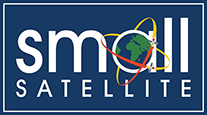Session
Session II: Next on the Pad-Enterprise
Location
Salt Palace Convention Center, Salt Lake City, UT
Abstract
The SpaceCraft for Optical-based Position Estimation-1 (SCOPE-1) is a 3U CubeSat developed by the Texas Spacecraft Laboratory (TSL) at The University of Texas at Austin to demonstrate near real-time Position, Navigation, and Timing (PNT) estimation primarily using optical detections of Earth’s islands and archipelagos. The mission adapts algorithms originally developed for lunar crater-based PNT and applies them to terrestrial features for validation in low Earth orbit (LEO). SCOPE-1 features an onboard system combining Mask R-CNN-based surface-feature detection, catalog-based feature identification, and an extended Kalman filter (EKF) to estimate position and timing in near real-time. The SCOPE-1 spacecraft will be built with primarily commercial off-the-shelf (COTS) components and will operate in LEO for one year following a planned 2027 launch. Additionally, the TSL is constructing an on-site ground station with UHF and S-Band capabilities to support in-house mission operations. This mission advances the technology readiness level (TRL) of the surface feature-based navigation algorithms and serves as a key step toward enabling autonomous navigation for future lunar and deep space missions. This paper presents an overview of the SCOPE-1 mission, including its objectives, concept of operations (ConOps), payload system, PNT algorithms, and spacecraft design.
Document Type
Event
SCOPE-1: On-Orbit Surface Feature-Based Navigation and Timing Mission Overview
Salt Palace Convention Center, Salt Lake City, UT
The SpaceCraft for Optical-based Position Estimation-1 (SCOPE-1) is a 3U CubeSat developed by the Texas Spacecraft Laboratory (TSL) at The University of Texas at Austin to demonstrate near real-time Position, Navigation, and Timing (PNT) estimation primarily using optical detections of Earth’s islands and archipelagos. The mission adapts algorithms originally developed for lunar crater-based PNT and applies them to terrestrial features for validation in low Earth orbit (LEO). SCOPE-1 features an onboard system combining Mask R-CNN-based surface-feature detection, catalog-based feature identification, and an extended Kalman filter (EKF) to estimate position and timing in near real-time. The SCOPE-1 spacecraft will be built with primarily commercial off-the-shelf (COTS) components and will operate in LEO for one year following a planned 2027 launch. Additionally, the TSL is constructing an on-site ground station with UHF and S-Band capabilities to support in-house mission operations. This mission advances the technology readiness level (TRL) of the surface feature-based navigation algorithms and serves as a key step toward enabling autonomous navigation for future lunar and deep space missions. This paper presents an overview of the SCOPE-1 mission, including its objectives, concept of operations (ConOps), payload system, PNT algorithms, and spacecraft design.


